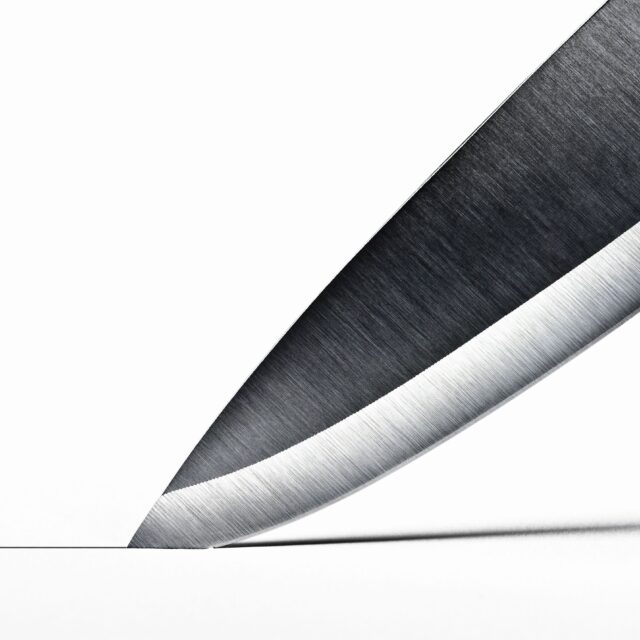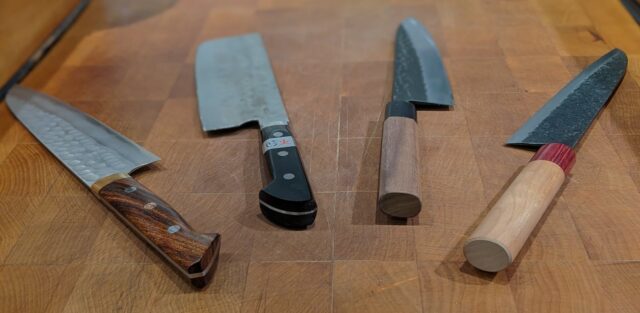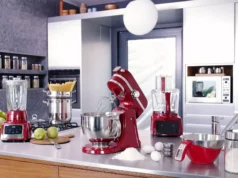
Anyone who has ever used a knife knows that there are multiple factors that determine how well the vegetables and fruits will be cut. Believe it or not, there is a specific art involved in selecting the right kitchen knives.
As a beginner, it is normal to make mistakes which is why we are here to help. There are a number of mistakes people tend to make during the buying process that are easy to avoid. In this article, we aim to give you some tips to make the buying process easier. Also look out for some mistakes to avoid while buying your next pair of kitchen blades.
Mistakes to Avoid
Not Enough Research
There is a lot that can go wrong if you just walk into a store and pick the first knife set that you find. Knowing all the important factors is essential so that you make an educated decision and do not waste your money. Some level of research is important to know different brands, their products, and what they can offer you.
Ideally, proper research will tell you about the type of handle, material, blade and edge you require for daily use. Not doing enough research can result in cutting your finger along with throwing money down the drain.
Not Setting a Budget

Believe it or not a budget matters a lot while buying anything online or offline. There are multiple types of knives available in the market by different brands that have varying prices. If a buyer does not set a budget they are more likely to spend more than they ought to on a set of kitchen knives.
The biggest mistake is the inability to shortlist the perfect options. This will be made easier if you set a budget and do not cross that limit for any option. You will thus get a price range with some good quality knives you can choose from. Try to keep a cash buffer so that you can buy something good if it catches your eye.
Being Overtaken by Advertisement
Understand that advertisements are specifically made to target your emotions and create a need for something you would be better off without. For instance, if you go to buy a kitchen knife, you want a set you can actually use. Watching an advertisement and going for the wrong option will only lead to overspending. Be practical while making the purchase so that you get a durable alternative.
Tips for Buying
Know the Blade

Once you have decided upon the material based on its advantages it is time to choose the blade type. There are mainly two types of blades:
- Forged: During the forging process the steel is forced into a desired shape and then tempered to form the blade. When you choose a forged blade the defining features include heavier weight in your hand, better quality but a thicker blade. It is usually more costly than other alternatives.
- Stamped: The only other type of blade in the market is made through the help of a machine. It is cut from a larger piece of steel and then heat treated for strength. After being sharpened, it is ready to use. This blade is comparatively thinner and lightweight. It is also less costly than its forged counterpart.
Know the Constituent
The material of the knife is extremely important in terms of durability. Let us know the basic description of different types of blade components:
- Stainless Steel: Most of the utensils used in the kitchen today are made of stainless steel because of its rust free properties. Multiple substances from different eatables will get on the Blade so you need to ensure that your purchase is durable.
- Ceramic: Ceramic blades are made after being heated for strength and sharpness. They require less maintenance and can easily survive long even with continuous use.
- Carbon Steel: Blades that have a low carbon content and are not defined as stainless steel are called carbon steel. They are relatively cheaper and easy to sharpen in case the edge gets dull. You can get more information at Cookinglife.
- Titanium: While the three materials mentioned above are fairly common, titanium is not usually found in typical kitchens. The main advantage of choosing titanium is that it is non reactive with any kind of food.
Choose the Handle

The handles matter as much as the blade while selecting a kitchen knife. Let us take a look at some of the most common handle types:
- Wood: Wooden handles were extremely popular and now being replaced by synthetic materials. You can have the choice between different types of woods.
- Synthetic: Synthetic material type of handles include multiple materials like plastic and fibrox. They thus have flexibility on their side.
Know the Edge
There are two types of edges available in the market and you will only need one if you want a kitchen knife for basic cooking.
- Straight Edge: A blade having a straight edge will directly go into the food item. This is perfect for anyone who wants to cut the occasional vegetables in fruits and engage in basic cooking.
- Serrated Edge: These types of knives have uneven edges and require some effort from the user in a sawing motion. They are mostly used for specific food groups which is why they have limited use in the kitchen.
The Takeaway

Buying good kitchen knives is an entire process which requires vigilance, research, and practical knowledge. Some of the most common mistakes to avoid during the buying process is not setting a budget and not researching enough. Acquiring basic information about the material of construction, the type of blade, and the handle type is important so that you make a choice worth the money. Whether you buy it online or offline make sure to ask all the questions if you have any doubts. Only make the final choice after comparing different options.













